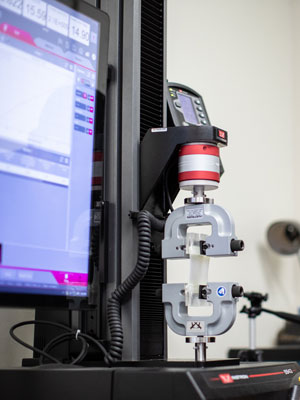
Because of their unique ability to be pulled, twisted and conform to 3D surfaces, stretchable electronics have a variety of applications that include wearable health monitors, cyber skin for robotic devices and flexible solar cells. However, even with these superpowers, stretchable electronics can tear, but not in ways that one would normally think.
In a recent paper published in PNAS, Dr. Matt Pharr, assistant professor in the J. Mike Walker ’66 Department of Mechanical Engineering at Texas A&M University, has shown that a tiny rip in some stretchable materials spreads at right angles to the original tear, quite unlike a tear on paper that deepens when pulled. His findings on the mechanics of tears in elastic materials may help develop more tear-resistant materials in the future.

Pharr first suspected that stretchable materials have a unique tear pattern when he was playing with a soft, elastic material called elastomers. When he pulled on a crack in the material, he noticed that the tear became bigger in the direction of the pull. This observation led him to further investigate the “sideways cracking” of these materials more systematically in his laboratory.
He found that when elastomers are relaxed, their structural properties are the same in all directions. But when pulled, these materials undergo microscopic structural changes that make them have different properties in different directions. And so, the tear does not get deeper; instead, it changes direction and expands alongside the rest of the elastomer.
“This is scientifically intriguing,” said Pharr. “It’s not expected. And seeing something that I don’t expect always sparks curiosity.”
